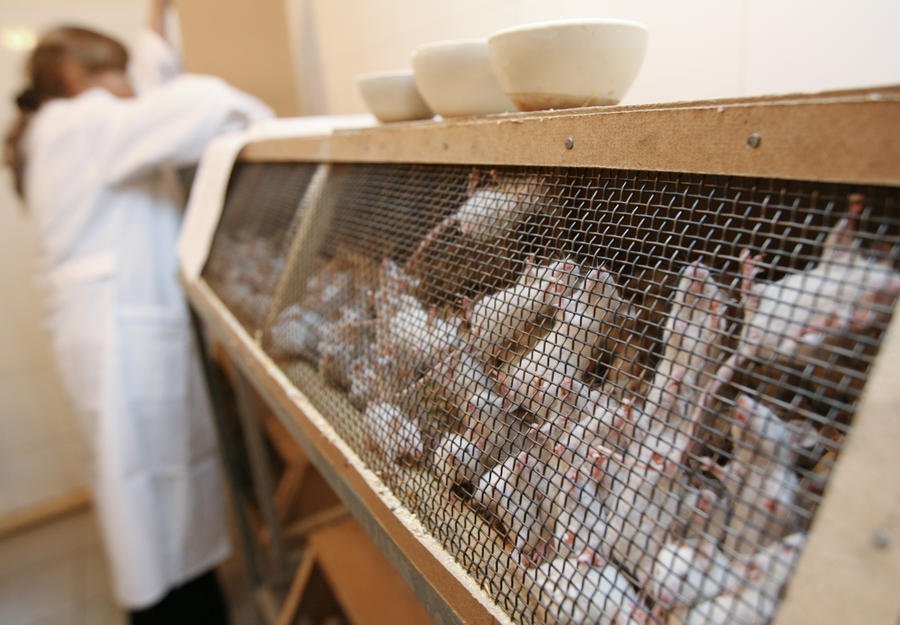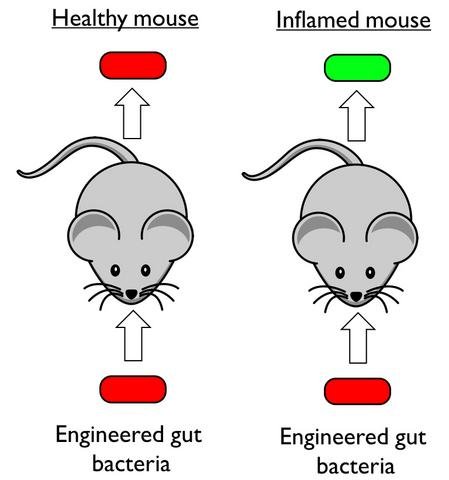Bacteria

Trillions of microorganisms live in the intestines of mammals that somehow influence the health and the appearance of diseases. Most of them are not well understood by modern science, and not so many technologies have been developed for studying the processes occurring in the intestine.
But bacteria for tens of thousands of years formed genetically encoded sensors that recognize different types of particles. Therefore sensory genetically modified bacteria have the potential to study and diagnosis of intestinal bowel diseases. Like the electricians who design the circuits of their wires and electronic components, biologists use genetic schemes to program single-celled beings for performing complex operations on information processing.
Biologists from the University of Rice created intestinal bacteria capable of recognizing colitis – inflammation of the colon, – mice. Further development can be used to study how intestinal bacteria interact with the human body at the molecular level. In addition, bacteria can be a kind of test for monitoring the condition and bowel disease.
In their previous work, they hypothesized that changes in the intestinal microbiota, genetic predisposition and other factors can have a certain effect on the onset and development of inflammatory diseases Intestine – Crohn’s disease and ulcerative colitis.
Based on a number of other previous studies, scientists concluded that the number of molecules of thiosulphate can be increased by emya colitis. It was difficult for them to study this connection, because there are no tools for a reliable instrument for measuring thiosulphate in animals. The first goal of the team of scientists was to develop such a tool.

Work on the project began in 2015, and its idea was to use sensory bacteria. In this case it is a genetically modified E. coli (Escherichia coli), which after modification should determine thiosulfate and associated sulfur-containing compounds. There is a connection between the metabolism of sulfur in the intestine and inflammation, and scientists knew that it was necessary to measure them for diagnosing inflammation of the large intestine.
The researchers were able to understand the methods of intestinal bacillus programming well. The bacterium began to produce a fluorescent green protein in response to specific stimuli. So far, no other genes have known genes that would be used to determine thiosulfate. A small number exists only for other compounds.
The co-author of the study, Ravi Shet, in 2015 used a computer program to determine potential sensors of thiosulphate and other compounds in the genome of Shewanella – a type of bacteria that live in marine sediments. A team of scientists suggests that Shewanella probably breathes these molecules and uses sensors to incorporate the relevant enzymes in their presence.
Biologists spent one year developing a modified E. coli bacterium to react to potential biomarkers by changing their color to green. It took another year to prove that the system works and does indeed detect inflammation of the colon in mice.
The researchers forced to swallow two drops with a billion bacteria with sensors of both healthy mice and mice with colitis. Six hours later, they measured the activity of bacteria in each group. The control green protein could be detected with a flow cytometer.
The team found that the thiosulfate sensor was activated in mice with inflammation and not activated in healthy individuals. In addition, it was found that the stronger the inflammation is, the more active are the sensors. It is not yet known whether an increased level of thiosulphate can be a reliable indicator of colitis in humans, but sensory bacteria can be modified to react to other compounds or molecules.
In the future, researchers plan to develop an inflammatory home test that In case of illness will change the color of the stool. Such a test will help reduce unnecessary and expensive visits to the doctor and colonoscopy procedures. To achieve this goal, the team began to collaborate with gastroenterologists from Baylor College of Medicine.
The scientific paper was published in the journal Molecular Systems Biology on April 3, 2017
DOI: 10.15252 / msb.20167416








